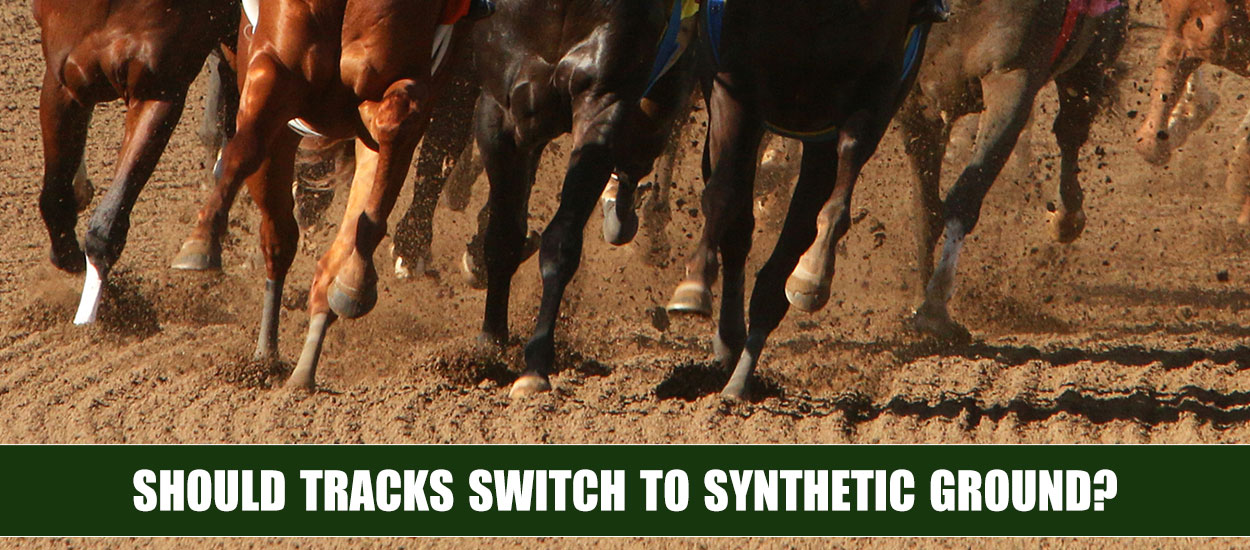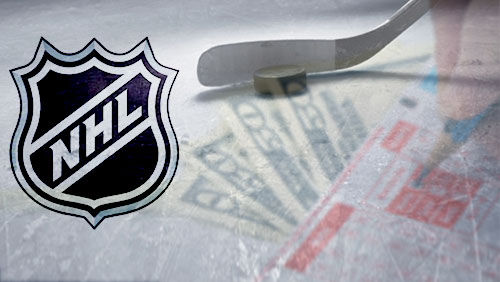Synthetic surfaces have been proven to save horse's lives
So far, 2023 has not been a good year for horse racing safety.
On June 2nd Churchill Downs suspended racing at the track after 12 horses died in a span of a few weeks, including one on Kentucky Derby Day. The track shifted racing to Ellis Park, but that didn’t satisfy animal welfare groups who said they were ignoring the issue in an effort to change the channel. And this Saturday fans were shocked and visibly upset at Saratoga Racetrack when undefeated 3-year-old Maple Leaf Mel had a commanding lead in the stretch and seemed well on her way to victory in the Grade 1 Test Stakes. The horse buckled, fell and presumably broke its leg just before the finish line. The official explanation was that the horse suffered “a catastrophic leg injury that required her to be euthanized on the track.” Because the race was shown on national TV and because the breakdown happened right at the finish line, the news came to the forefront. Many other horses have died this year as well at all horse tracks, but most were not in major races and not at the finish so they didn’t get the attention of Maple Leaf Mel. What made the breakdown even more heartbreaking was a pre-race clip that showed 39-year-old trainer Melanie Giddings, (who the horse was named for), with her arms around Maple Leaf Mel and was kissing he horse in the barn. So, the breakdown had a more personal effect as well. The following day Giddings was given a wreath of carnations by the trainer of the horse who won the Test Stakes, a gesture that was appreciated but really didn’t ease the pain. While Giddings was heartbroken, she was still tending to the other seven horses in her barn.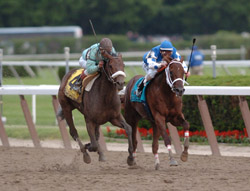 Many say Maple Leaf Mel’s fall was reminiscent of the 1990 Breeders' Cup when Go for Wand was battling head-to-head with Bayakoa down the stretch, when Go for Wand took a bad step and snapped her leg. She too was almost immediately euthanized and what was more heartbreaking were TV cameras showing the filly trying to finish the race on 3 legs. It is accepted that horse racing is a dangerous and often cruel sport, but owners and horsemen have always claimed that the welfare of the horses is paramount.
Many say Maple Leaf Mel’s fall was reminiscent of the 1990 Breeders' Cup when Go for Wand was battling head-to-head with Bayakoa down the stretch, when Go for Wand took a bad step and snapped her leg. She too was almost immediately euthanized and what was more heartbreaking were TV cameras showing the filly trying to finish the race on 3 legs. It is accepted that horse racing is a dangerous and often cruel sport, but owners and horsemen have always claimed that the welfare of the horses is paramount.
That was iterated by Frank Stronach in 2019, who has been possibly the most instrumental person in horse track design and development. After Santa Anita Racetrack suspended races following a winter meet where nearly two dozen horses were fatally injured on track and in training that year, Stronach issued the following statement:
"I have always said that the key stakeholders within the horse industry are – the racetrack owners, horse owners, trainers, jockeys, breeders and veterinarians. As stakeholders, we have to prove to the public that we love and care for the horses – not only while they are racing but long after they finished their racing career. That is why I strongly believe we need a “Racing Charter of Rights” where all the participants in our industry are protected, including the horses. I look forward to bringing forth a number of different ideas to you the people which love horses."
For her part, Belinda Stronach, who is chairman CEO of Stronach Group, created a new set of rules to address the horse breakdowns with strict rules banning race day drugs such as Lasix and Bute and also rules which limited the use of the whip. The rules have helped since horse deaths at Santa Anita and Del Mar declined in 2020 and 2021. But the new spate of horse racing fatalities in 2023 has raised the issue again.
What neither Frank nor Belinda Stronach addressed in the new rules, and what seems to be the elephant in the room, is whether the tracks need to switch to new surfaces. Horses run on three types of surfaces in North America – turf, dirt and synthetic tracks. Turf racing has always been viewed as safer for horses than dirt which is why it is the standard in most of the world. And for synthetic tracks there are different formulations, although three are the most popular: Polytrack, used mostly in Europe, Pro-Ride, used mostly in Australia, and Tapeta, which is the synthetic track used in North America and is expected to be the track that will replace the other options when the old synthetic tracks in Europe and Australia are no longer viable. Synthetic tracks all have the same basic materials, a combination of rubber, sand, wax and synthetic fibers. They are not as deep as traditional dirt tracks, offer better drainage than dirt as long as they are hooked up to a proper system, can be used year-round (hence called all weather tracks), and most importantly, offer even and uniform conditions for horses even during inclement weather. Numerous studies have shown that horses that are raced on synthetic surfaces are almost 28% less likely to break down than horses racing on a dirt surface and it’s much better on Tapeta. 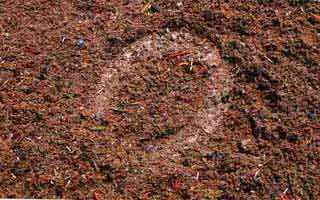 Fatal breakdowns on synthetic tracks in the last few years have averaged about 1.3 per 1,000 starts, compared with 2.15 per 1,000 starts on dirt. And in colder climates, like Toronto and Erie, they are less than 1.11 per 1,000 starts. In fact, Woodbine racetrack, which has had synthetic tracks for almost three decades and doesn’t race in the winter, has had years where fatal breakdowns were less than 1.0 per 1,000 starts and most horses that do break down at that track do not require euthanization. Mark Casse, who trains horses throughout North America and was originally based in Toronto, has been promoting the use of synthetic tracks for years. And for a time, it seemed that all racetracks were going that route. In 2006 the California Horse Racing Board required all the thoroughbred tracks there to install synthetic surfaces, including Santa Anita, Del Mar and Golden Gate Fields. But after 10 years, when the tracks had to be reinstalled, Santa Anita and Del Mar ripped up the synthetic tracks and reinstalled dirt. Keeneland in Kentucky did the same, as did other tracks. The tracks argued that synthetic tracks were too expensive to maintain and they didn’t want to put in the time and money to ensure proper drainage and maintenance. Consequently, today only Golden Gate Fields, Gulfstream, Woodbine, Turfway Park and Presque Isle Downs in Erie, Pennsylvania have synthetic Tapeta tracks in North America. Belmont has announced it is installing a synthetic track as well, although it appears that track will only be used when the weather is bad and the dirt track will be used otherwise.
Fatal breakdowns on synthetic tracks in the last few years have averaged about 1.3 per 1,000 starts, compared with 2.15 per 1,000 starts on dirt. And in colder climates, like Toronto and Erie, they are less than 1.11 per 1,000 starts. In fact, Woodbine racetrack, which has had synthetic tracks for almost three decades and doesn’t race in the winter, has had years where fatal breakdowns were less than 1.0 per 1,000 starts and most horses that do break down at that track do not require euthanization. Mark Casse, who trains horses throughout North America and was originally based in Toronto, has been promoting the use of synthetic tracks for years. And for a time, it seemed that all racetracks were going that route. In 2006 the California Horse Racing Board required all the thoroughbred tracks there to install synthetic surfaces, including Santa Anita, Del Mar and Golden Gate Fields. But after 10 years, when the tracks had to be reinstalled, Santa Anita and Del Mar ripped up the synthetic tracks and reinstalled dirt. Keeneland in Kentucky did the same, as did other tracks. The tracks argued that synthetic tracks were too expensive to maintain and they didn’t want to put in the time and money to ensure proper drainage and maintenance. Consequently, today only Golden Gate Fields, Gulfstream, Woodbine, Turfway Park and Presque Isle Downs in Erie, Pennsylvania have synthetic Tapeta tracks in North America. Belmont has announced it is installing a synthetic track as well, although it appears that track will only be used when the weather is bad and the dirt track will be used otherwise.
When Gulfstream decided to put in an all-weather synthetic surface, Aidan Butler, the CEO of Gulfstream, who happened to be part of the Stronach Group said "synthetic tracks have always trended a little better for turf horses than for dirt horses. In Florida, you can have a torrential downpour and with the new Tapeta surface, you rest the turf, but you’ve got a very good offering for turf horses should the weather change."
It’s thus ironic that Stronach decided to rip up Santa Anita if safety was truly the big concern. It is also notable that in the UK and Australia, the only non-turf tracks are all weather synthetic tracks because the British Horse Racing Authority and Australian Racing Board deemed that the synthetic surfaces act like turf and are safer for horses and jockeys, and the lower breakdown rate overseas on synthetic even over turf proves they are correct.
Turfway Park, Presque Isle Downs and Woodbine, which have Tapeta tracks, have all said the surface is incredible for preventing breakdowns. Richard Elliston from Turfway Park said that the track saw a 90% decrease in breakdowns since it opted for Tapeta, while spokespeople at Presque Isle Downs said they only see about 2 to 3 breakdowns a year. And as mentioned, Woodbine has seen breakdown rates far lower than other tracks since the installation of their new surface. To their credit, Woodbine had to decide whether to install a new synthetic surface after their original polytrack began wearing out or revert to dirt and the track decided to bite the bullet and install the new Tapeta track, citing calls by horsemen to keep it, specifically because it is safer for the horses.
Aside from the cost to maintain, tracks which ripped up their synthetic surfaces said that traditional horse players did not like the synthetic tracks because horses ran truer to form, so while it was easier to handicap the races, the payouts were far lower than on synthetic than on dirt tracks.
Drugs
Aside from the reluctance to install a safer surface, the sport also has not helped itself by not taking strong enough measures against trainers who break the rules. Bob Baffert was suspended from Churchill Downs and in New York for the positive test for a banned substance on Medina’s Spirit in the Kentucky Derby, but he still happily trains horses at other racetracks and is always the leading trainer at Santa Anita and Del Mar. Moreover, he raced horses at the Breeders' Cup at Keeneland, only a short drive from Churchill Downs. This flies right in the face of statements issued by Frank and Belinda Stronach, who in 2019 claimed that the horse’s bill of rights would require trainers who drug horses to be suspended indefinitely. Baffert also was found to have drugged 2019 Triple Crown winner Justify. Moreover, Rick Dutrow, who was suspended in New York in 2011 for 10 years for multiple violations, including administering Winstrol, an anabolic steroid to most of his horses, including Kentucky Derby and Preakness Winner Big Brown, was welcomed back by the New York Racing Association, who said he completed his penalty. It is notable that Dutrow was fined or suspended by U.S. horse racing authorities 72 times previously for administering illegal substances to horses. And last December trainer Jason Servis, who admitted to drugging every horse he owned and was implicated in a plot to dispose of the dead bodies of horses to avoid detection, pled guilty and received four years in prison. All of the 27 accomplices in the doping and horse disposal scheme including trainer Jorge Navarro also pled guilty in exchange for 3 to 5 years in prison. The trainers were each facing up to 25 years in prison for various federal charges and pled down. While this may have been the right option legally, most horse lovers and animal rights groups will view it as a cop out. The same holds true for Baffert and Dutrow. Legally there may have been no other option, but the optics are terrible for horse lovers who will view horse racing as an industry that still doesn’t do enough to protect their most valuable assets.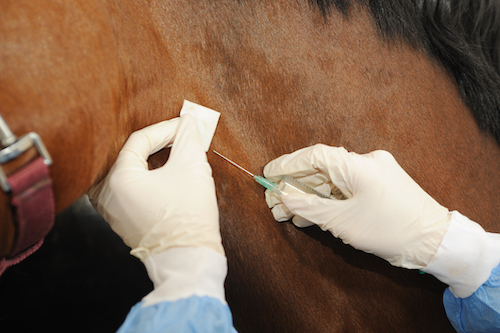 So, Saturday was another day where horse racing saw a big blow to its image. Maple Leaf Mel was a budding star and seemed ready to be a horse that could get kids interested in the sport the same way Barbaro and Smarty Jones did before her. But that will not happen as Maple Leaf Mel broke down and had to be euthanized on track. There is no reason to suspect that trainer Melanie Giddings drugged the horse or did anything wrong and it was simply an unfortunate incident that caused her to buckle and break her leg. But, what isn’t known, is if a synthetic surface would have prevented it. There’s no way to know for sure, but it can’t be argued that if she was racing on a synthetic surface instead of dirt, she would have had a better chance. Numbers don’t lie and synthetic surfaces, particularly Tapeta is simply safer. Saratoga is a beautiful track that only runs a few months a year, so the life of a new Tapeta track would almost certainly last many years as long as the track tends to it frequently.
So, Saturday was another day where horse racing saw a big blow to its image. Maple Leaf Mel was a budding star and seemed ready to be a horse that could get kids interested in the sport the same way Barbaro and Smarty Jones did before her. But that will not happen as Maple Leaf Mel broke down and had to be euthanized on track. There is no reason to suspect that trainer Melanie Giddings drugged the horse or did anything wrong and it was simply an unfortunate incident that caused her to buckle and break her leg. But, what isn’t known, is if a synthetic surface would have prevented it. There’s no way to know for sure, but it can’t be argued that if she was racing on a synthetic surface instead of dirt, she would have had a better chance. Numbers don’t lie and synthetic surfaces, particularly Tapeta is simply safer. Saratoga is a beautiful track that only runs a few months a year, so the life of a new Tapeta track would almost certainly last many years as long as the track tends to it frequently.
The horse racing industry is at a crossroads and must decide where its priorities are. Do they try to save money, keep older horse bettors happy and keep the dirt tracks, or do they put horse safety first and install synthetic tracks? The answer seems to be obvious for any horse lover and those who realize that as long as star horses break down on the track and get euthanized, the younger generations will turn away from the sport. No doubt smaller B tracks like Parx, Fonner Park, Mountaineer Park, Fort Erie, etc. will say they can't afford to install new synthetic tracks but the real question is can they afford not to? If universal synthetic tracks mean a small increase in the takeout at tracks to pay for the initiative, or if it involves ideas that have been discussed at gambling conferences such as exchange wagering, fixed odds betting and allowing sportsbooks to offer tote betting on their sites then it’s almost certain there wouldn’t be pushback. It’s a win-win for all. One thing is certain; however, the status quo is not working.
Read insights from Hartley Henderson every week here at OSGA and check out Hartley's RUMOR MILL!










